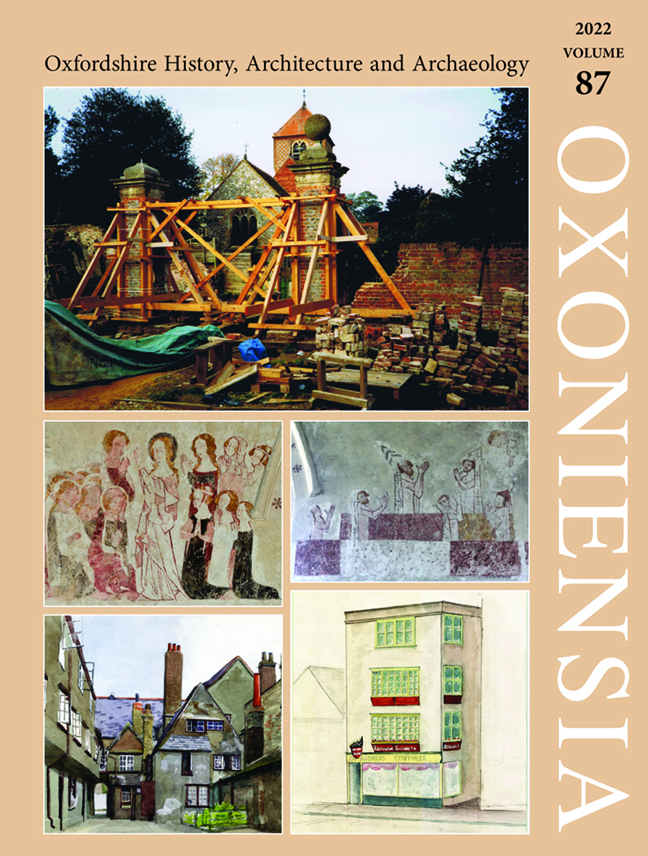Restoring Mapledurham: A South Oxfordshire Estate and its Buildings, 1960–2019
Published online by Cambridge University Press: 17 February 2024
Summary
SUMMARY
The Mapledurham estate in the far south of Oxfordshire is well known for its rich and varied collection of historic buildings. Preeminent amongst them is the Grade 1 listed Mapledurham House, the largest Jacobean manor house in the county, alongside which stands the surviving part of its medieval predecessor. Other nearby structures include the parish church and its estate-owned medieval aisle, a range of converted seventeenth-century almshouses, and a seventeenth- and eighteenth-century watermill. Outlying buildings include four medieval cruck-framed houses. The survival of these and other buildings and, in many cases, the lack of substantial alteration to them in recent centuries owes much to the longevity of the estate and the financial difficulties faced by its owners as Roman Catholic recusants. However, by the early twentieth century the future of the estate was uncertain and many of its buildings had fallen into decay. This article traces the contribution of John Joseph (‘Jack’) Eyston (1934–2019) to the continuation of the estate and in particular the restoration of many of its historic buildings. The opening of Mapledurham House to the public and changes in attitudes towards the preservation of historic building are discussed.
The 2,500-acre Mapledurham estate includes a large and varied set of historic buildings, the near forty listed structures representing probably the densest concentration in single ownership in the county. The estate's best-known architectural feature is Mapledurham House (Fig. 1, top left), a substantial brick-built mansion tree-ring dated to c.1608–12, which retains both its original H-plan and numerous internal details, including fine decorative plasterwork and woodwork. Georgian remodelling included re-fronting and the addition of a Gothick Roman Catholic chapel to the rear. Today the house is Grade 1 listed in recognition of its national importance. The Old Manor House, survivor of the medieval manorial complex on the same site, is of fifteenth-century and later date, its earliest element (Fig. 1, bottom left) being a two-storey structure with a three-bay lower chamber and two-bay upper hall, dendro-dated to 1448. The nearby parish church, heavily restored in 1863, incorporates a south aisle added as a chantry chapel for Sir Robert Bardolf (d. 1395), lord of Mapledurham Gurney manor (Fig. 1, bottom right). The aisle retains much of its original roof (repaired in 1471–2), together with some medieval floor tiles and glass.
- Type
- Chapter
- Information
- Oxoniensia , pp. 105 - 126Publisher: Boydell & BrewerPrint publication year: 2022

